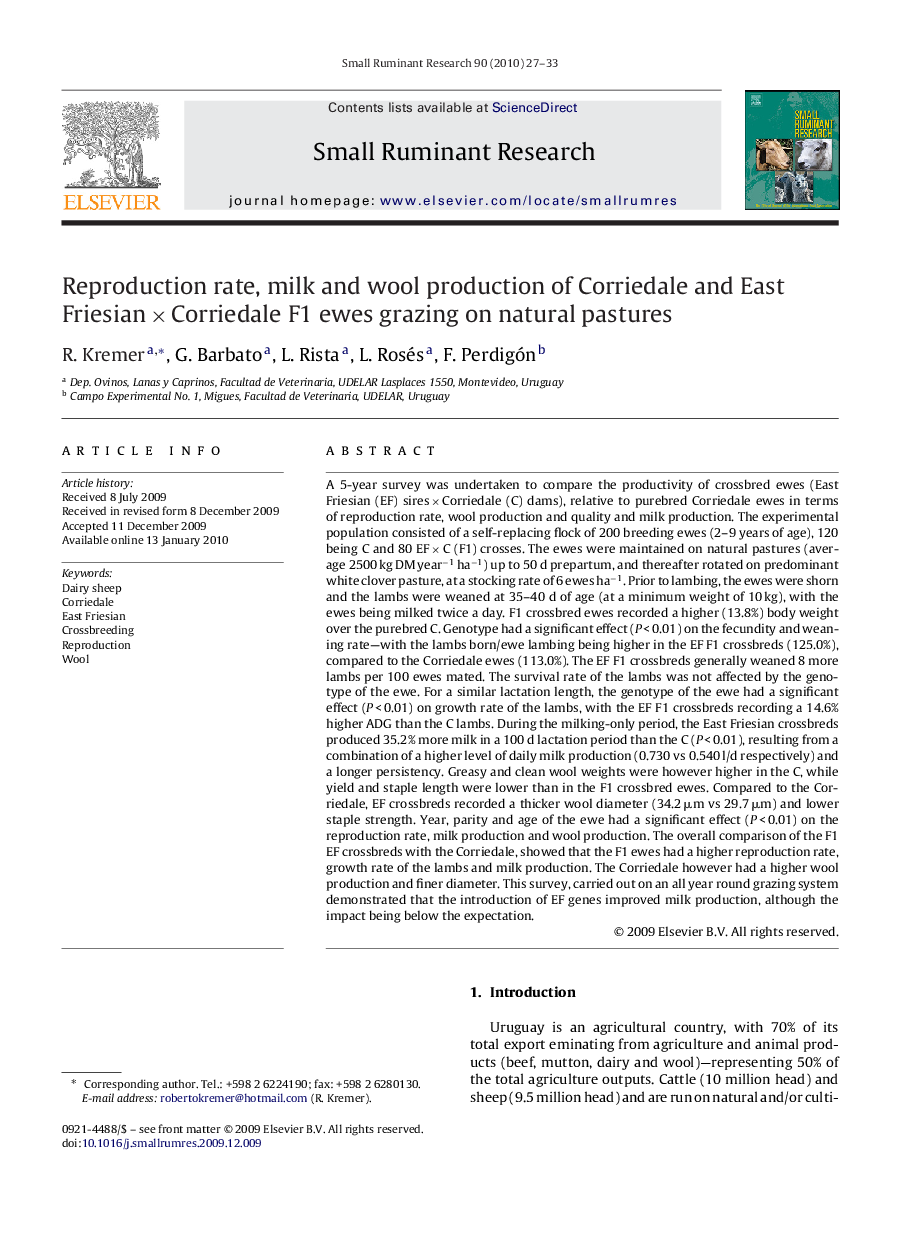| کد مقاله | کد نشریه | سال انتشار | مقاله انگلیسی | نسخه تمام متن |
|---|---|---|---|---|
| 2457489 | 1554402 | 2010 | 7 صفحه PDF | دانلود رایگان |

A 5-year survey was undertaken to compare the productivity of crossbred ewes (East Friesian (EF) sires × Corriedale (C) dams), relative to purebred Corriedale ewes in terms of reproduction rate, wool production and quality and milk production. The experimental population consisted of a self-replacing flock of 200 breeding ewes (2–9 years of age), 120 being C and 80 EF × C (F1) crosses. The ewes were maintained on natural pastures (average 2500 kg DM year−1 ha−1) up to 50 d prepartum, and thereafter rotated on predominant white clover pasture, at a stocking rate of 6 ewes ha−1. Prior to lambing, the ewes were shorn and the lambs were weaned at 35–40 d of age (at a minimum weight of 10 kg), with the ewes being milked twice a day. F1 crossbred ewes recorded a higher (13.8%) body weight over the purebred C. Genotype had a significant effect (P < 0.01) on the fecundity and weaning rate—with the lambs born/ewe lambing being higher in the EF F1 crossbreds (125.0%), compared to the Corriedale ewes (113.0%). The EF F1 crossbreds generally weaned 8 more lambs per 100 ewes mated. The survival rate of the lambs was not affected by the genotype of the ewe. For a similar lactation length, the genotype of the ewe had a significant effect (P < 0.01) on growth rate of the lambs, with the EF F1 crossbreds recording a 14.6% higher ADG than the C lambs. During the milking-only period, the East Friesian crossbreds produced 35.2% more milk in a 100 d lactation period than the C (P < 0.01), resulting from a combination of a higher level of daily milk production (0.730 vs 0.540 l/d respectively) and a longer persistency. Greasy and clean wool weights were however higher in the C, while yield and staple length were lower than in the F1 crossbred ewes. Compared to the Corriedale, EF crossbreds recorded a thicker wool diameter (34.2 μm vs 29.7 μm) and lower staple strength. Year, parity and age of the ewe had a significant effect (P < 0.01) on the reproduction rate, milk production and wool production. The overall comparison of the F1 EF crossbreds with the Corriedale, showed that the F1 ewes had a higher reproduction rate, growth rate of the lambs and milk production. The Corriedale however had a higher wool production and finer diameter. This survey, carried out on an all year round grazing system demonstrated that the introduction of EF genes improved milk production, although the impact being below the expectation.
Journal: Small Ruminant Research - Volume 90, Issues 1–3, May 2010, Pages 27–33